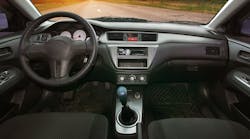In Ann Arbor, Mich. last Tuesday, Secretary of Transportation Elaine Chao released details of guidelines for the deployment of self-driving vehicles, representing the Trump administration’s vision for the self-driving car industry. The guidance is entirely voluntary and has no compliance requirement or enforcement mechanism.
Called “A Vision for Safety,” the DoT document aims to promote improvements in safety, mobility, and efficiency through automated driving systems. A Vision for Safety replaces the Federal Automated Vehicle Policy released in 2016. This updated policy framework is designed to:
- Encourage new entrants and ideas that deliver safer vehicles. It states that companies do not need to wait to begin testing and deploying their automated driving systems, and tries to streamline the self-assessment process for companies and organizations;
- Make DoT regulatory processes more nimble to help match the pace of private sector innovation; and
- Support industry innovation while encouraging open communication with the public and with stakeholders.
The document asks automakers to consider questions such as where the vehicle can operate safely (highways, city streets, rural roads, etc.), how vehicles can safely recover from errors (e.g., stopping in a safe place), how to validate vehicle safety (testing and simulation), and how to ensure security.
In its nonregulatory approach to automated vehicle technology safety, the document is generally supportive of the automotive industry and other key stakeholders as they consider and design best practices for the testing and safe deployment of Automated Driving Systems (SAE Automation Levels 3 through 5 – Conditional, High, and Full Automation Systems). It contains 12 priority safety design elements for consideration, including vehicle cybersecurity, human machine interface, crashworthiness, consumer education and training, and post-crash behavior.
The document also provides Best Practices for Legislatures, which incorporates common safety-related components and significant elements regarding automated driving systems that states should consider incorporating in legislation. In addition, the document provides Best Practices for State Highway Safety Officials, which offers a framework for States to develop procedures and conditions for safe operation on public roadways. It includes considerations in such areas as applications and permissions to test, registration and titling, working with public safety officials, and liability and insurance.
Chao said this framework will continue to be updated, and that the DoT is already working on the third version, with plans to introduce the new guidance in 2018.


